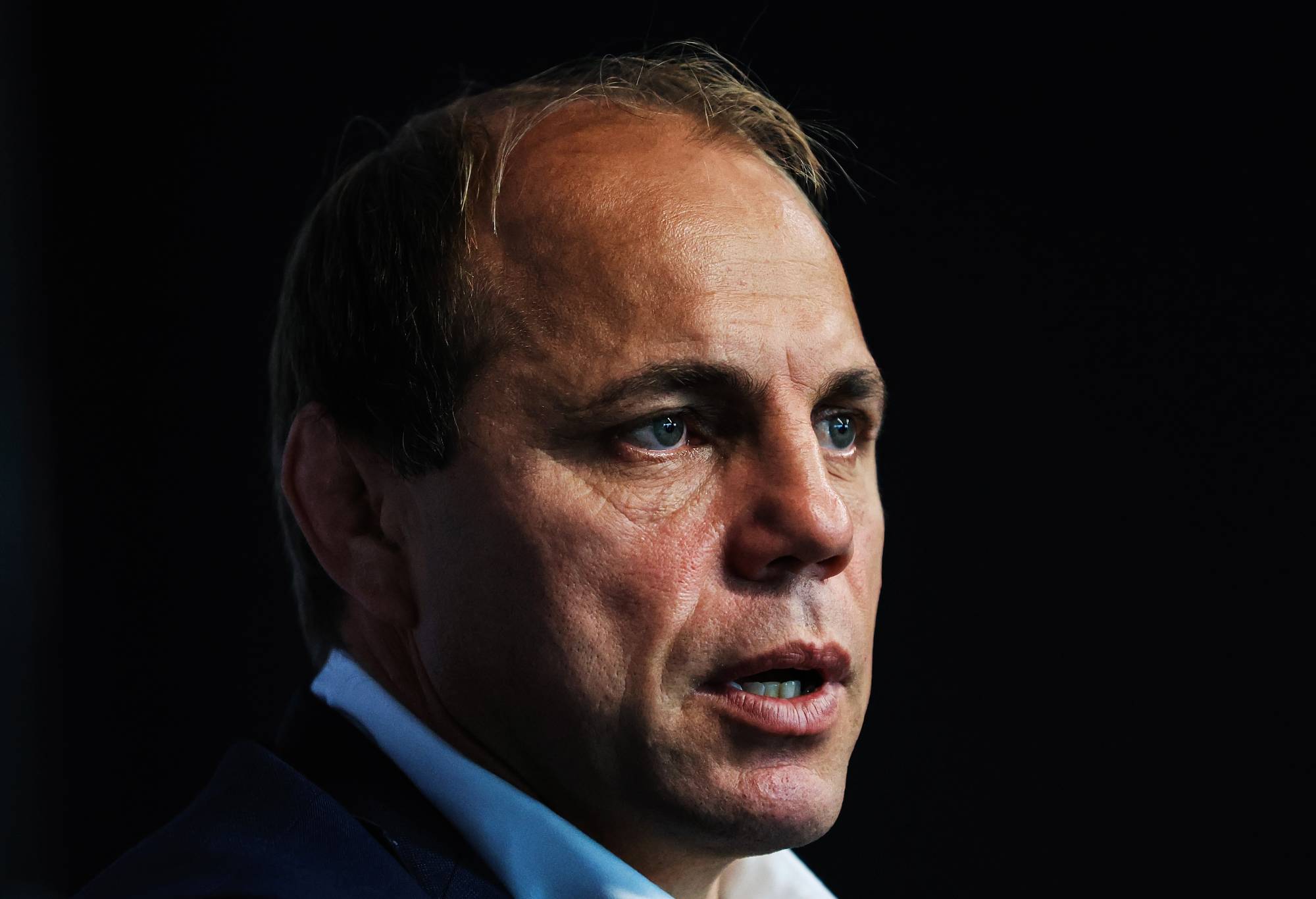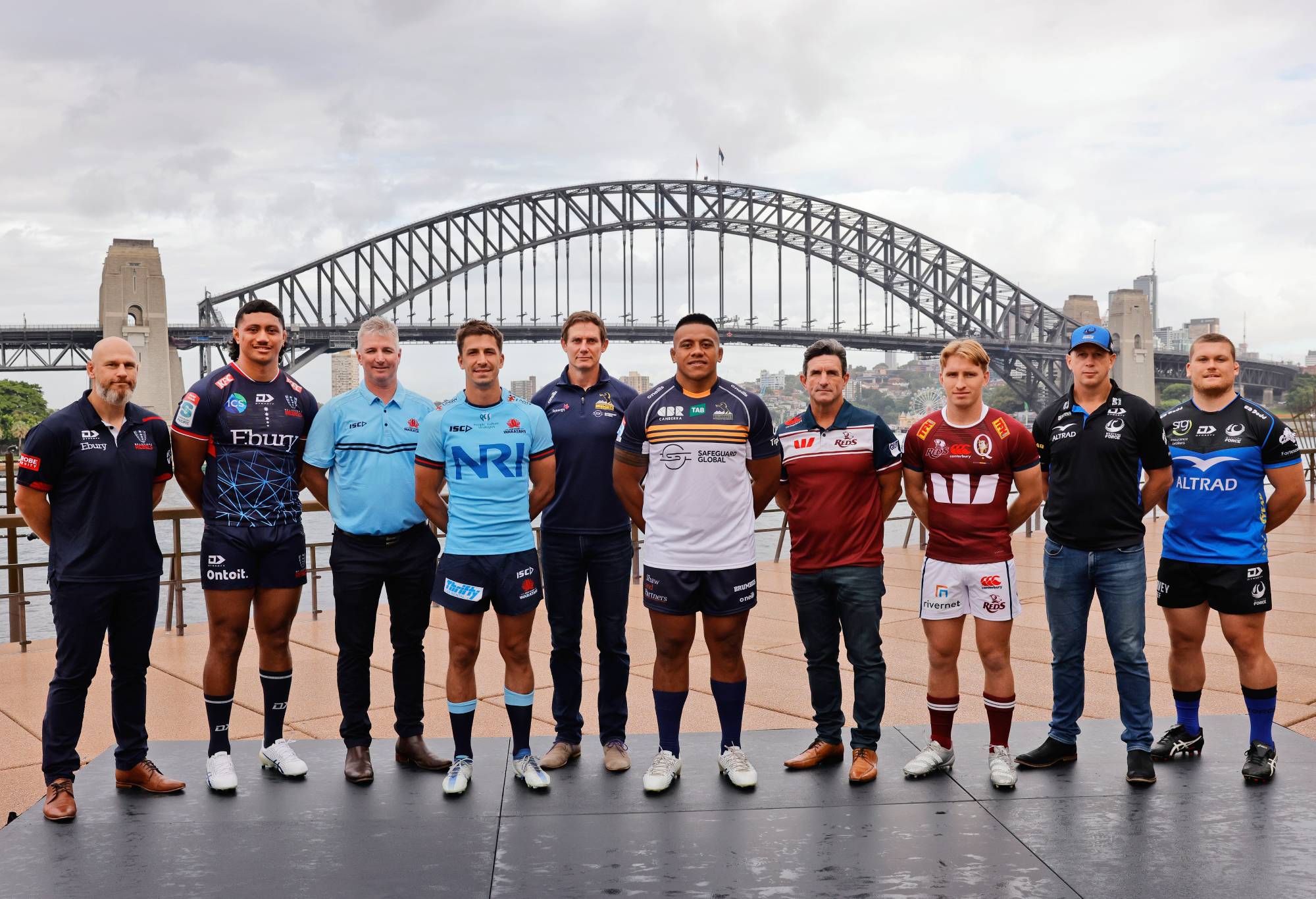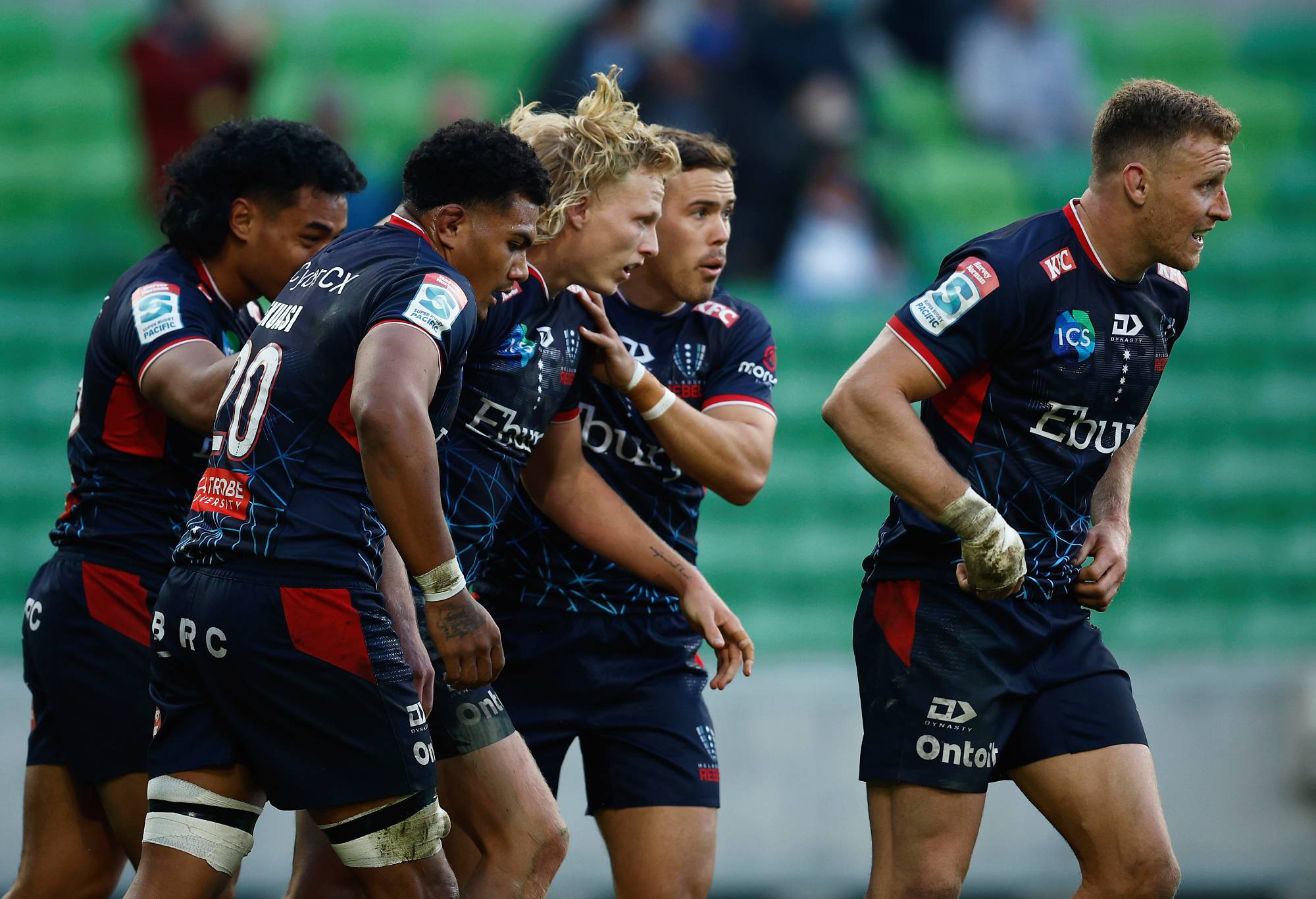Seven years after the messiest year in Australian rugby history that culminated in the culling of the Western Force, Rugby Australia is back to where it hoped it would never return: having to decide what to do with one of its five Super Rugby franchises.
In a situation that could prove to be even more damaging than the Wallabies’ calamitous 2023 season, Rugby Australia’s leadership team, headed by second-year chief executive Phil Waugh, will face the biggest test of their judgement over the next month of their administrative careers.
Indeed, the decision could either make or break Australian rugby, with the game currently spiralling out of control on and off the field.

Rugby Australia CEO Phil Waugh’s moment of truth is nearly upon us. (Photo by Mark Evans/Getty Images for Rugby Australia)
Having taken out an $80 million loan late last year to keep the game afloat, RA must find a minimum of $15m per year to service the game’s many mouths.
Where once the Australian Rugby Union only had three Super Rugby franchises under their banner, that’s expanded to five men’s and women’s sides following the return of the Force in 2020, the Wallaroos and the Australian men’s and women’s sevens squads. It’s believed the cost of running a Super Rugby franchise is anywhere between $12-14m, while a Super W team is an estimated $1m.
At the same time, RA’s broadcast deal has dropped substantially, with the $29m it receives from Nine Entertainment/Stan nearly less than half of the $50m it received from Foxtel during the previous SANZAAR agreement.
The numbers quite simply don’t add up, and with Australia’s Super Rugby franchises struggling and the Wallabies winning at less than 40 per cent over the past eight years, there are great fears RA won’t be able to generate the broadcast revenue they need to help service all the teams under their umbrella.
The looming broadcast deal, where negotiations have been underway for some time ahead of the next cycle which starts from 2026, comes at a time when three of the five Australian Super Rugby franchises are feeling the pinch.
Having had $1.7m taken away from them each year since 2020 as a necessity for RA to stay solvent during the Covid pandemic, the NSW Waratahs, ACT Brumbies and Rebels are struggling to stay afloat.

Three of Australia’s five Super Rugby franchises are feeling the pinch. (Photo by Jenny Evans/Getty Images)
But the Waratahs, who recently handed back their license to RA and exist in one of Australia’s two main breeding grounds for talent and in the biggest market, are secure for the aforementioned reasons despite having around $4m worth of debt.
The Brumbies’ future is less secure given they battle to draw a crowd of over 10,000 and owe RA an estimated $1.1m, but because they are Australia’s most successful Super Rugby franchise and continue to be the pace-setters, it’s unlikely they will be relocated.
The Rebels, meanwhile, have struggled on the field since 2011, struggle to draw a crowd and are starring down the barrel of $9m in debt.
It’s why they are set to slip into voluntary administration, with the Rebels, who have assembled one of their best-looking rosters this season, calling in Wexted Advisors on Thursday to assess the situation.
For now, the Rugby Union Players’ Association has assured the Rebels that their future and wages are secure for the 2024 season. Beyond that though, there have been no guarantees.
It leaves RA on the eve of the season, and broadcast negotiations continuing in the background over the next six months, with the difficult task of determining what to do with the Rebels?
While RA ultimately wants a national footprint, and the common consensus is the governing body is more likely to get a higher broadcast offer with five sides rather than four, something former RA chairman Hamish McLennan was adamant about, they are bleeding money.
RA is also juggling whether their high performance needs, in particular the Wallabies, could improve by returning to four Super Rugby franchises because the depth would not be spread as thin.
“Everything is on the table in terms of the growth of the Wallabies’ performances, and what will feed through to us being number one or two in the world,” Waugh said late last year.

The Melbourne Rebels’ future is far from certain. Photo: Daniel Pockett/Getty Images
At the same time, the Victorian government has recognised the impact rugby union is having in the state, particularly with the strong and positive impact on Pacific Islanders in the community.
That impact has also flowed onto the national team, with several local ;players of Pacific Islands heritage, including captain Rob Leota, wearing the Wallabies jersey at last year’s World Cup.
Should the Rebels fall over at season’s end, what will that do for the game at large in Melbourne?
In the short term, the players’ contracts would likely be honoured elsewhere, with new homes found across Australia, like in the case of the Force seven years ago.
In the long term though, will it see more players and coaches forced to head overseas? Will young boys and girls turn to other sports instead?
Unlike the four-month circus that followed Cameron Clyne’s grossly inaccurate timeframe of either the Force or Rebels being culled in 2017 inside “48-72 hours” in April 2017, RA wants to move relatively quickly on determining the future of the Rebels.
Before that though, the governing body wants to get the complete financial picture before making its next move.
It stands to be Waugh’s most significant.































































































